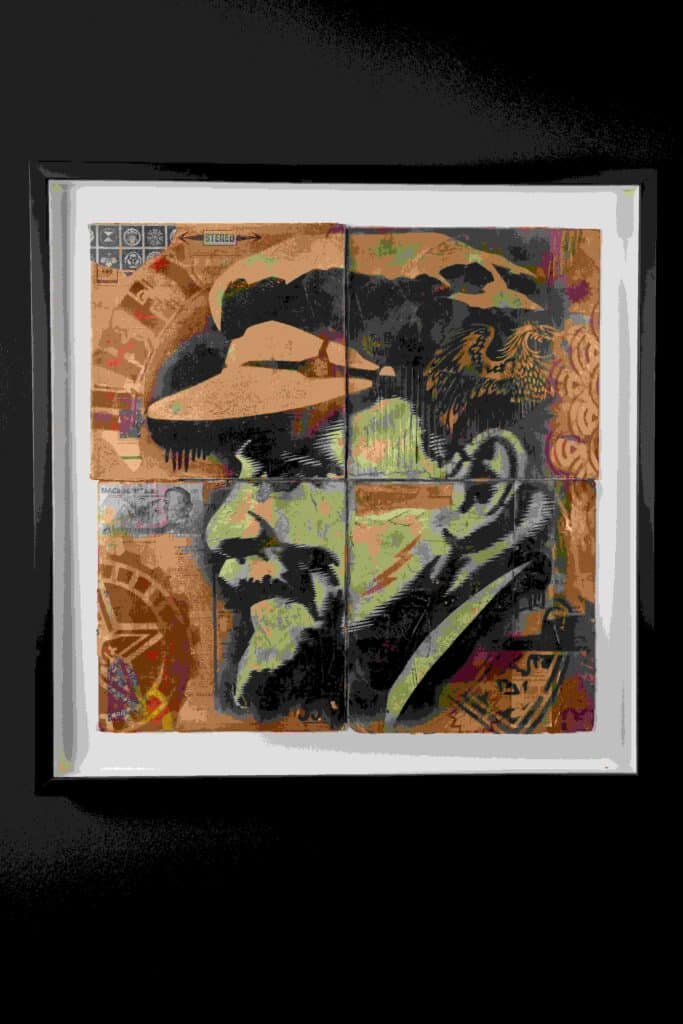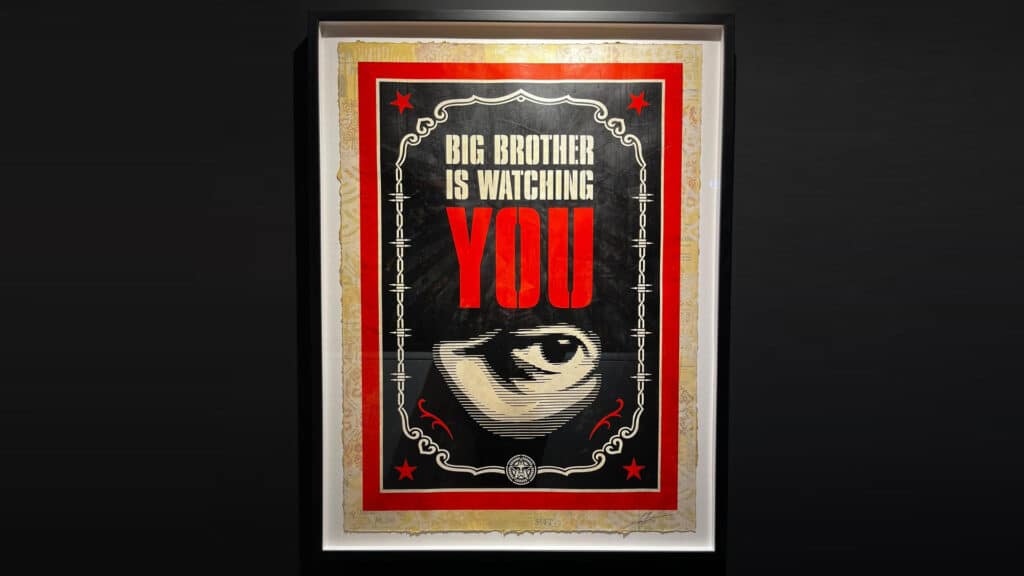Who is Shepard Fairey?
Frank Shepard Fairey (born 1970 in Charleston, South Carolina) is a contemporary artist, graphic designer and illustrator. He graduated from Idyllwild Arts Academy in Palm Springs, California. Besides skateboarding and punk music, he was interested in art from a very early age.
Fairey is considered one of the most prolific street artists and graphic designers of his generation. He explains this through his conscious perception of human mortality. He was diagnosed with diabetes at the age of 15, which always drove him to quickly put his ideas into practice.
His work is characterised by a lasting influence from many other artists, such as Barbara Kruger, Keith Haring, Jean-Michel Basquiat or Robbie Conal.
Obey Giant Sticker Campaign
Shepard Fairey already became known in 1989 with his sticker campaign "Andre the Giant Has a Posse". At that time he was still studying at the Rhode Island School of Design. The sticker featured a portrait of a wrestler cut out of a newspaper, along with the words "OBEY". This strategy of combining an image and an accompanying prompt caught people's attention. Called "Obey Giant", the action developed into a worldwide campaign through the reproduction of the stickers. Regarding his Giant series, the artist explains: "The image is meant to function as an open symbol, a sign without reference, encouraging readers to find their own interpretations in order to confront their pre-existing assumptions about what counts as propaganda, where they are likely to encounter it and how it affects them personally.
Following the British writer George Orwell, for whose books he designed covers, Shepard Fairey's work explores the emergence of class and cultural identity, the power of political and religious ideology, state-sanctioned systems of secrecy and surveillance, the real threat of authoritarianism and the possibility of resistance.
As an art activist, Shepard Fairey belongs to the street art movement and is in the tradition of his role model Keith Haring. Shepard Fairey uses stylistic devices from advertising, which he understands as a "seductive form of propaganda". This visual language is very significant in his works, which he uses to criticise social and political issues. Since the accessibility of his socio-critical messages is extremely important to Shepard Fairey, they can be found both on large murals (wall paintings) in public spaces and on poster prints.
SHEPARD FAIREY'S "OBEY" IN THE "25 YEARS" EXHIBITION AT MUCA MUNICH
The MUCA exhibition "25 Years" (06.10.2022 - 10.09.2022) showed a collection of works under the title "OBEY: Three Decades of Dissent".
Fairey here adopts the same visually manipulative style of the ideological posters of communist Russia from the 1960s to the 1980s. However, Fairey subverts the style to spread progressive and positive ideas. He wants to create awareness of the still existing influence and omnipresence of ideological images.
In the MUCA basement, during the "25 Years" exhibition, an entire OBEY wall was on display with numerous images from the last thirty years of Fairey's career.

Print, design and cover
In 1992 Fairey graduated with a Bachelor of Arts in Illustration. He then founded a small printing company called Alternate Graphics, which specialised in screen printing T-shirts and stickers. This was followed by the founding of the design agency BLK/MRKT with Dave Kinsey and Phillip DeWolff, which focused on guerrilla marketing and the development of high-impact marketing campaigns.
Fairey leaves them in 2003 and launches his own agency, Studio Number One. His best-known clients include Virgin, Adidas and Nike. But his creativity knows no boundsIn 2001 he founded the Fashion label "OBEY clothing". His love of music has also always been part of his creative process. He designed covers for albums by a wide variety of musicians, including Neil Young and the indie rock band Interpol.
The Barack Obama Portrait "Hope" by Shepard Fairey
Fairey's most successful works in the media are the cover of Time Magazine in honour of the Person Of The Year 2011, with his depicted representative for the Arab Spring, and the "Hope" portrait of Barack Obama. His final breakthrough came in 2008 with the iconic portrayal of the US President.
In addition to paintings, stencils and posters, he also uses starch paste, screen printing and many other media for his works. Through the use of type and image, Fairey blurs the boundaries between art and commerce. Yet Fairey is no opponent of the commercial. In his view, art and commerce need each other much more than they would like to admit.
In 2009, the Institute of Contemporary Art in Boston hosted Fairey's first solo exhibition "Supply and Demand with around 200 of his works, and described him as one of the best-known and most influential street artists of our time. Nevertheless, he prefers to see his works in public space, where they unfold their social and political critique publicly and site-specifically.
Shepard Fairey's protest against fracking on Munich's walls
How important it is to Shepard Fairey to realise art far away from commerce and to use it primarily to draw attention to current social problems is also reflected in his mural "Paint it black" in Munich. In 2015, Fairey realised a mural in Landshuter Allee. On an area of 15×13 metres, he expresses his protest against the power and influence of internationally operating oil companies on world politics and the accompanying environmental destruction. The mural was created under the impressions of the discussion about fracking and the conclusion of the TTIP free trade agreement between the USA and Europe, which flared up at that time.
